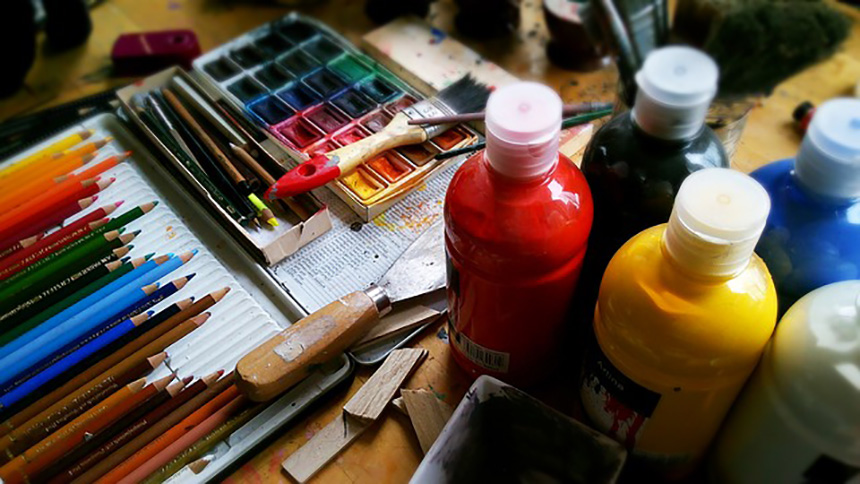
From singing to painting or simply listening to music, engaging in creative arts can do wonders when it comes to navigating difficult personal experiences or trauma.
It’s about expression
Have you ever felt soothed by a great song, calmer after some adult colouring, or better for having done something remotely artistic? Growing evidence shows the power the artistic process has to help us process emotions and experiences, and face life’s dilemmas. Modern science and psychology have helped to uncover the benefits of creative arts in promoting positive mental health outcomes, by stimulating brain chemicals which improve mood and wellbeing.
It’s not an entirely new revelation – artists have been using art to express themselves for centuries – Vincent Van Gogh famously used his art to cope with mental illness throughout his life, and Edvard Munch is widely regarded to have inspired a whole movement of expressionism in art.
As an exercise in mindfulness, painting and drawing can work like mediation, reducing feelings of stress and increasing feelings of relaxation. In addition to mental wellbeing, dabbling in the arts can also help our critical thinking and problem solving skills. Elliot Eisner, a professor of education at Stanford University said engaging in the arts from a young age teaches multiple perspectives and that problems often have more than one solution.
Fiona Gardner is a registered Art Therapist and lectures at Murdoch University.
People can use creative methods to process overwhelming feelings or face life’s dilemmas. Music, dance, performance, art making are all different methods a creative arts therapist can use to work with clients to build a healing relationship. Fiona Gardner
The power of people
While picking up the crayons or belting out your favourite song is bound to make you feel a little better, the real power lies in how creative arts are being used with older, more traditional methods of therapy. The key is combining art with people.
“While modern science and psychology help us make these links between the creative arts and our mental health as individuals, older theories and principles of psychotherapy also show us that other people and human relationships are key to human health and happiness”, Fiona says.
By integrating art with therapeutic techniques, arts therapists are able to guide clients in a personalised way.
“Working with the arts therapist integrates the expressive capacities of the arts with the evidenced importance of the therapist client relationship to bring about growth and change. There is a rich breadth to how they use the arts to work with and meet client needs”.
Getting in touch with the unconscious
Freudian psychology suggests much of our lives are driven by unconscious thought, and it’s this part of our minds arts therapies aims to engage with.
Fiona says the collaboration between art and therapy focuses on discovering more about ourselves than our conscious day-to-day thoughts.
“As Freud once taught us, our unconscious minds are often the part of us that is "driving the bus", so to speak, in our lives. Making and collaborating in creative arts activities is an ideal way to engage in a situation where you might be able to discover more about what is going on in that part of us we don't often think about” she says.
“Creative arts therapists train in models of relationship building which are interested in the resources we each have within us to be creatively engaged.”
Helping us get in touch with our inner selves, in other words.
Graduate Diploma in Creative Arts Therapies
Helping develop a foundation in both theoretical knowledge and elementary hands-on art therapy and counselling skills, the Graduate Diploma in Creative Arts Therapies at Murdoch has proven beneficial for arts practitioners, counsellors, teachers, social workers, chaplains, psychologists, and youth workers.
ANZACATA 2018 Conference at Murdoch
Murdoch will be hosting the 2018 Australian, New Zealand and Asian Creative Arts Therapies Association conference on 7-10 December. The conference will showcase leading arts therapies research from around the world, and feature an exhibition of artwork from Murdoch’s Graduate Diploma in Creative Arts Therapies students. The student exhibition is also open to the public on level 3 of the Geoffrey Bolton Library on campus.